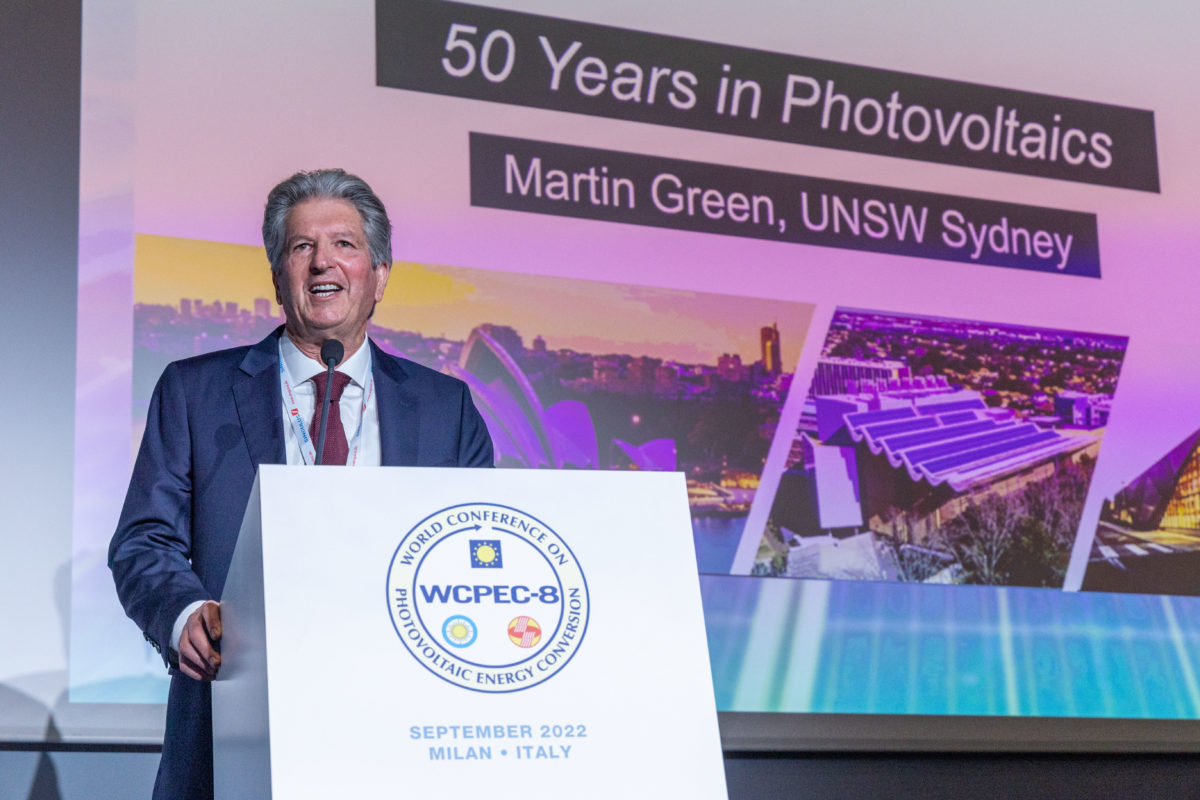Pioneering solar researcher Martin Green is going to need a bigger trophy cabinet. Fresh of his receipt of the WCPEC award, which was bestowed every four years at the world’s biggest academic solar conference held last month in Milan, Green has been awarded the $1.55 million Millennium Technology Prize in Helsinki.
The prize is awarded every two years by the Technology Academy Finland. Previous winners include Tim Berners-Lee for the World Wide Web, Shuji Nakamura for his work on LED lighting, and Robert Langer from his work on mRNA vaccines.
In a statement announcing the award, the Chair of the Technical Academy of Finland Minna Palmroth said: “Professor Green’s innovation has already significantly improved the quality of life for billions of people worldwide and will continue to do so. It promotes environmentally sustainable development, from national power grids to private homes.”
The Millennium Technology Prize International Jury Chair Päivi Törmä added that the PERC cell assists in providing “low-cost energy solutions to address climate change.” Pointing to Green’s current work in identifying and boosting the efficiency of abundant, non-toxic thin film solar cells, she noted, “research on solar cells is needed to replace those of their components that are available in limited quantities – such as silver – with alternatives that are more abundant.”
Speaking with pv magazine Australia, Green said that the acceleration of solar module price declines that occurred from 2016 through to 2020 can be attributed to the widespread adoption of PERC technology.
“My take on that is that the pressure that PERC was putting on the multicystalline manufacturers [starting in 2016] forced them drop prices in an attempt to maintain their market share,” said Green, “so PERC was the thing that accelerated their cost reduction.
“Until mid 2020, when the coronavirus and other issues destroyed the steady cost reductions that had been achieved since 2016, it was a pretty steady 22% rate that the technology was reducing in price.
“So, we credit PERC in that transition and if you extrapolate from 2016 to the end of 2020 at 12% a year or 22% a year, then you get PERC, with the accelerated cost reduction, to an average selling price of 54% of what it would’ve been at a business-as-usual scenario. We consequently claim that PERC has accelerated the cost of reduction to nearly double what it would’ve been without PERC having been introduced.”
With PERC approaching its physical limits in terms of conversion efficiency, Green has turned his attention to PV thin films, which may be options for stacking onto a c-Si cell – a tandem cell. Currently copper zinc tin sulfide (CZTS) is proving a promising candidate, and is a cell with which the UNSW team have made considerable progress.
“We hold the world record at the UNSW for CZTS – the pure sulfide version,” said Green. “That seems to have all of the attributes that we are after; the constituents are all benign elements and all pretty abundant so it’s the closest thing to artificial silicon that you can make. But getting the efficiency up to 20% is proving difficult, we’re presently at around 12%.”
The 2022 ceremony celebrating Green’s innovation will take place as part of the Millennium Innovation Forum, also hosted by the Technical Academy of Finland and held Oct. 25-26.
This content is protected by copyright and may not be reused. If you want to cooperate with us and would like to reuse some of our content, please contact: editors@pv-magazine.com.









By submitting this form you agree to pv magazine using your data for the purposes of publishing your comment.
Your personal data will only be disclosed or otherwise transmitted to third parties for the purposes of spam filtering or if this is necessary for technical maintenance of the website. Any other transfer to third parties will not take place unless this is justified on the basis of applicable data protection regulations or if pv magazine is legally obliged to do so.
You may revoke this consent at any time with effect for the future, in which case your personal data will be deleted immediately. Otherwise, your data will be deleted if pv magazine has processed your request or the purpose of data storage is fulfilled.
Further information on data privacy can be found in our Data Protection Policy.